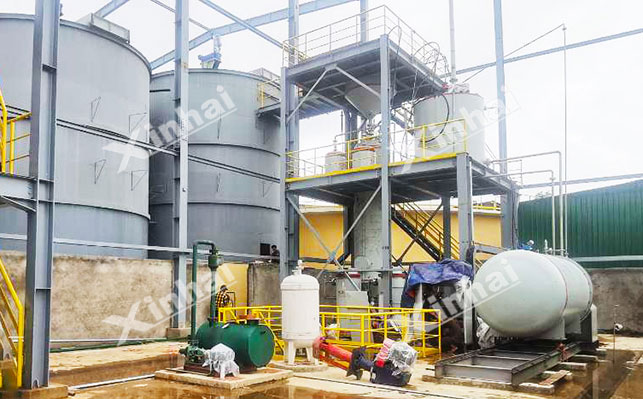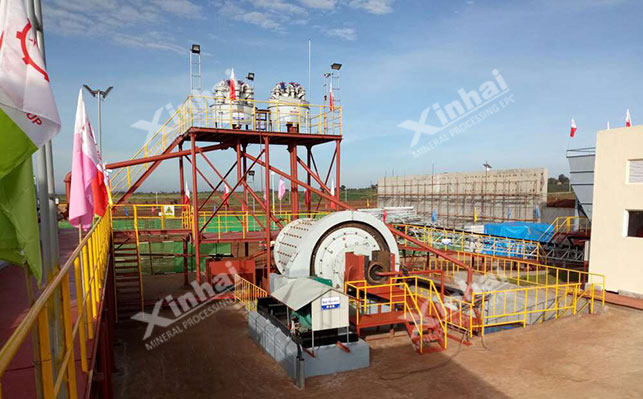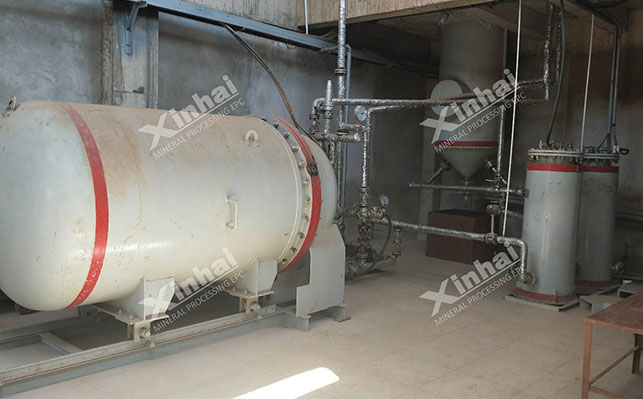
15311826613
Click to add WeChatCarbon-pulse gold extraction is a common technology in gold extraction processes. It primarily utilizes a closed-loop system of "leaching-adsorption-desorption-regeneration" to achieve efficient gold recovery and resource recycling. This article will provide a detailed introduction to the carbon-pulse gold extraction process from multiple perspectives!
Carbon-pulse gold extraction is a series of processes involving cyanide leaching to dissolve gold, activated carbon adsorption to enrich gold, and desorption to recover gold.

Simply put, in an alkaline environment, cyanide ions undergo a complexation reaction with gold to form gold-cyanide complexes. Activated carbon acts as a "magnet," adsorbing and enriching the gold-cyanide complex ions dissolved in the ore pulp, thus separating the gold from the ore.
Carbon: Refers to highly absorbent activated carbon, usually coconut shell carbon or coal-based carbon, with a large specific surface area and well-developed microporous structure, serving as the "carrier" for gold adsorption. The particle size of the activated carbon is typically controlled within the range of 12-20 mesh (0.85-1.7 mm). Too fine a particle size will easily be lost with the ore pulp, while too coarse a particle size will reduce the adsorption rate.
Pulp: Refers to the ore pulp formed by grinding gold ore finely and mixing it with water, lime (to adjust the pH), and cyanide. During this process, the cyanide dissolves the gold in the ore, forming soluble gold-cyanide complexes.
Adsorption: This is the main physicochemical process in the entire gold extraction process. Gold cyanide complex ions dissolved in the slurry are strongly attracted and adsorbed by the active sites on the surface of activated carbon due to their molecular structure and charge characteristics, and thus transferred from the liquid phase to the activated carbon.
The principle of CIP gold extraction is a complete chain mechanism from dissolution to recovery. Its successful gold extraction mainly relies on the following key physicochemical principles:

Cyanide Leaching: This is the gold dissolution process. In an alkaline environment of pH 10-11, oxygen is used as an oxidant, and cyanide as a ligand, working together to dissolve the elemental gold in the ore, forming stable, water-soluble dicyanate ions. This step converts solid gold into liquid gold ions.
Activated carbon adsorption: This is the gold enrichment process. By introducing activated carbon, gold cyanide complex ions dissolved in the ore slurry are adsorbed into its pores. These sites have van der Waals forces, electrostatic attraction, and possible chemical bonds with the gold cyanide complex ions, resulting in the gold ions being firmly adsorbed within the micropores of the activated carbon.
During leaching and adsorption, the adsorption rate is affected by factors such as ore slurry concentration, temperature, activated carbon particle size, and stirring intensity. Therefore, the process design must ensure that adsorption reaches or approaches equilibrium within a reasonable time to achieve a high recovery rate.
Gold enrichment: This is the separation process of desorption and electrolysis. When the gold-loaded carbon is saturated with adsorption, it undergoes desorption under high temperature and pressure, causing gold to desorb from the carbon surface into the solution. Subsequently, the gold-containing solution enters an electrolytic cell. Under the action of direct current, gold cyanide complex ions are reduced to metallic gold at the cathode, forming gold mud, which is then smelted to obtain gold ingots.
Carbon-in-pulp (CIP) methods include two types: carbon leaching (CIL) and carbon-in-pulp (CIP).

Carbon-in-Pulse (CIP): This is a step-by-step method involving leaching followed by adsorption. The ore pulp first undergoes cyanidation in the leaching tank to dissolve the gold, and then enters a separate adsorption tank to contact activated carbon. This method is unaffected by activated carbon during the leaching process, and the gold dissolution rate can be increased by extending the leaching time. It is suitable for gold ores with high sulfide content.
Carbon leaching (CIP):** This method involves simultaneous leaching and adsorption. Both sodium cyanide and activated carbon are added to the same tank, allowing leaching and adsorption to occur simultaneously. This method is suitable for ores containing "gold-stealing" substances, preventing the loss of dissolved gold due to re-adsorption by the natural carbonaceous material in the ore.
The difference between the two methods lies in whether leaching and adsorption are synchronized. In practical applications, the choice depends on the ore's leaching characteristics: CIP is preferred for difficult-to-leach ores, while CIL is preferred for easily leached ores. Some concentrators use a hybrid approach of semi-carbon leaching (first half leaching, second half leaching + adsorption) to balance efficiency and adaptability.
The complete CIP gold extraction process includes three main stages: pretreatment, leaching adsorption, and gold-loaded carbon treatment. The specific process is as follows:
**Grinding and Classification:** The crushed ore is ground to 80%-90% particle size (-0.074mm) using a ball mill. Then, the overflow particle size is controlled by a hydrocyclone to ensure sufficient liberation of gold minerals.
Concentration and Slurry Adjustment:** The overflow product from the classification is fed into a thickener for concentration, bringing the slurry concentration to 40%-50% to reduce the volume requirement of the subsequent leaching tank. Lime is added to the underflow of the thickener to adjust the pH to 10-11.

Cyanide Leaching: After slurry preparation, the slurry enters a series of leaching tanks or leaching-adsorption tanks. Cyanide is added, and compressed air is introduced to allow the gold to react under alkaline conditions.
Activated Carbon Adsorption: In the CIP process, the leached slurry enters a 3-6 stage series adsorption tank. Coconut shell activated carbon with a particle size of 12-20 mesh is added. Stirring ensures full contact between the carbon and the slurry. The gold-cyanide complex is adsorbed by the activated carbon. The tailings are discharged after pressure filtration.
Activated Carbon Circulation: Saturated gold-loaded carbon is removed from the final adsorption tank, and fresh activated carbon is replenished from the initial tank, forming a "countercurrent adsorption" system to improve adsorption efficiency.

Desorption: Gold is recovered from the gold-loaded carbon through a desorption column. Desorption is carried out under high temperature and high pressure conditions of 150-160℃ and 0.5-0.6MPa for 4-6 hours, during which the gold is transferred from the carbon surface into the solution. Electrolysis: The desorption solution enters the electrolytic cell, and a direct current is passed between the stainless steel cathode and the lead anode, reducing the gold cyanide complex to metallic gold, which is deposited on the cathode surface to obtain gold mud.
Smelting: After acid washing to remove impurities, the gold mud is smelted in a medium-frequency furnace with the addition of borax to obtain gold ingots with a purity of over 99.5%. Finally, it is electrolytically refined to 99.99%.
Activated Carbon Regeneration: The desorbed lean carbon is acid washed and activated at a high temperature of 600-800℃ to restore its adsorption performance, and then returned to the adsorption system for recycling.
The above is an introduction to the carbon-in-pulp adsorption gold beneficiation process. In practical applications, how should the gold extraction process be selected? A suitable process scheme needs to be selected based on the characteristics of the ore. It is recommended to conduct mineral processing tests and design a suitable process scheme through analysis. Xinhai Mining Equipment has extensive experience in gold ore beneficiation. We can not only design conventional process solutions but also develop new technologies tailored to the characteristics of the ore, providing customized solutions. We offer 29 innovative gold beneficiation process technologies. If you have any gold beneficiation needs, please feel free to contact Xinhai!